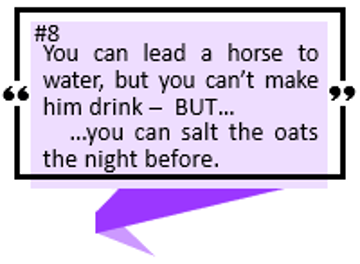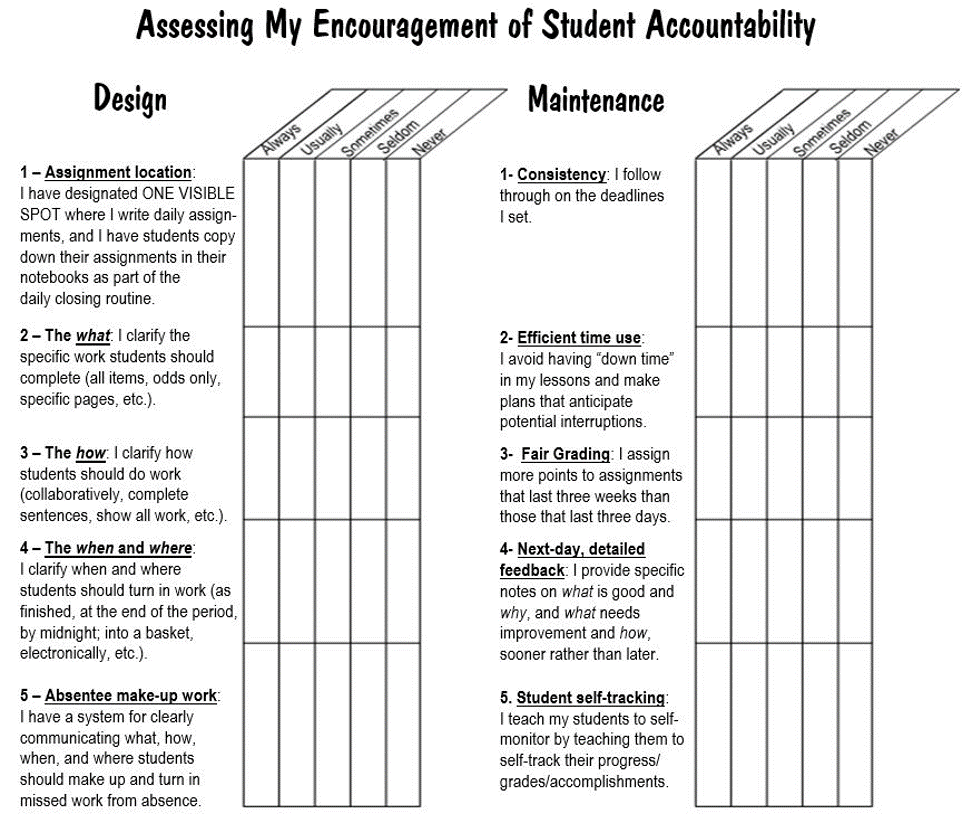20 Feb Word of Wisdom #8: Encouraging Student Academic Accountability
In WOW #6 we looked at a checklist of things students could do to help themselves be academically successful. But there are also teacher actions that help students be academically successful.
WHOSE JOB IT IS?
We’ve all heard the old adage about horses and water. No, you cannot make a horse drink. BUT there are things you can do to increase the likelihood that the horse will choose to put his nose in the bucket and partake of water. Like salting the oats the night before.
The same is true of getting students to do their work. You want them to develop and maintain student accountability for academic work. You want them to do the assigned work and turn it in at the assigned time. So how do you “salt the oats” for your students: How can you encourage students’ academic accountability?

Harris, A.H. & Tomick, J.K. (2016). Getting Off to a Good Start: The First Three Days of School. Ready to Teach: Nashville, TN.
When I started teaching, I really thought that student accountability was entirely the responsibility of the student. I assumed my job as teacher was explaining, demonstrating, and engaging and guiding student in learning activities. Completing and submitting assignments on time was strictly on the students’ shoulders. But over time, I learned there were things I could do as their teacher to help them achieve academic accountability. If I did these ten things, almost all assignments came in complete and on time. And this made my life easier!
TEN TEACHER ACTIONS THAT ENCOURAGE STUDENT ACCOUNTABILITY
These ten teacher actions can be thought of as creating a student accountability system. The system can be divided into categories of DESIGN and MAINTENANCE – and both require teacher action. Think of it this way: If you plan to build and live in your dream home, first you need to do a good job of designing house (think architect). But then, you must also do a good job of tending to the maintenance of it (think plumber). You need BOTH good design and good maintenance if you are to live comfortably for any length of time. Or, think of it as if you were directing a class play. In design, you set the stage for students to be successful; and in maintenance, as the play is in progress, you coach from the wings.
So what are the guidelines for good design/stage setting and for good maintenance/coaching? Read on…
True Story – “I Just Don’t Understand”
The freshman English class of a teacher friend was studying persuasive essays. For several days, they examined sample persuasive essays and analyzed types of persuasive argument. Then it was time for student to make their first efforts in writing a persuasive essay. The teacher told them to choose one side of a current controversial topic. Students asked for examples.
“Well,” she replied, “I saw two articles in this morning’s paper that dealt with the controversial topics of capital punishment and euthanasia.” And most of the class nodded to signify understanding.

The architect designs the system…

…and the maintenance man keeps it running.
Students began their in-class independent brainstorming for the writing assignment. But one student just sat with a puzzled look on his face. As the teacher actively monitored the room, she stopped at his desk and inquired why he had not yet begun to write. He looked up, frowning, and said, “I just don’t understand. I thought I knew what you meant by controversial, but I guess I don’t.”
“What don’t you understand?” she asked.
“Well…” he paused. “What’s controversial about teenagers in Asia?” And he was not trying to be funny. Although my friend clearly said “euthanasia,” the student clearly heard “youth in Asia” and was truly confused on what to do.
My teacher friend had unknowingly violated one of the five key design guidelines of getting students to do assignments – provide clarity of what to do. You wonder what the other design guidelines are? Read on…
FIVE DESIGN GUIDELINES FOR EFFECTIVE ACADEMIC ACCOUNTABILITY
Students do a much better job of DOING assignments when teachers do five things:
- Have a designated assignment location, one easily visible spot where daily assignments are listed and have students copy down their assignments in their notebooks as part of the daily closing routine.
- Clarify what students should do – e.g., all items, odds only, specific pages, specific topic, etc.
- Clarify how students should do work – e.g., collaboratively, complete sentences, show all work, etc.
- Clarify when and where students should turn in work – as finished, at the end of the period, by midnight; into a basket, electronically, etc.
- Have a system a system for clearly communicating what, how, when, and where students should complete and turn in absentee make-up work.
Regarding that fourth one above – a teacher in a workshop once shared that she had solved the “anonymous” papers problem. She simply prepared two turn-in baskets – one headed “Papers with Names” and one “Papers with NO names.” She said students would walk up to the turn-in baskets, paper in hand, read the basket labels, stop and write a name at the top, and then place it in the “Papers with Names” basket.
Regarding the second and third ones in the above list, consider using ideas from Word of Wisdom #3 to make sure your students understand. (Remember that asking Are there any questions? really doesn’t get it.)
True Story – “If You’re Not Grading It…”

A visual cue can be helpful!
It was my first year of teaching. I was naïve in many ways. One was that I had no idea of the time it would take to grade language arts homework assignments. And I promised my students I would read and grade everything they wrote. Papers to grade stacked up. And up. I fell behind – one week, two weeks, three weeks and more in getting papers back to them. As I worked my way down the stacks in one weekend marathon grading, I discovered fewer and fewer papers to grade. What??? The further I worked through the stacks, the fewer papers had been turned in for assignments. Some students had turned in no homework for two or more weeks!
On Monday I took my classes to task for so much missing homework. “But Miss Hawes,” explained one student, “we figured if you’re not grading it, we didn’t need to do it.”
Here I had violated one of the five key guidelines of getting students to turn in assignments – give timely feedback. You wonder what the other maintenance guidelines are? Read on…
A TEACHER SELF-CHECK LIST FOR STUDENT ACADEMIC ACCOUNTABILITY
Remember the self-check list for students in Word of Wisdom #6? Consider using one for yourself to make sure you cover all ten guidelines that encourage student academic accountability. The one below comes from Getting Off to a Good Start (Harris & Tomick, 2016, p. 68).
Using a teacher self-evaluation like the one above provides a way to identify things you are doing well in developing and supporting student academic accountability. It also helps identify “holes that need to be filled” to help students follow through and be academically successful.
One more thought on student accountability: For a resource of ideas you might find helpful for encouraging homework academic accountability, check out http://www.teachhub.com/how-increase-homework-completion
Until next week when we look at a way to equitably distribute opportunities to participate – may you experience success in all your academic endeavors!
Alene



